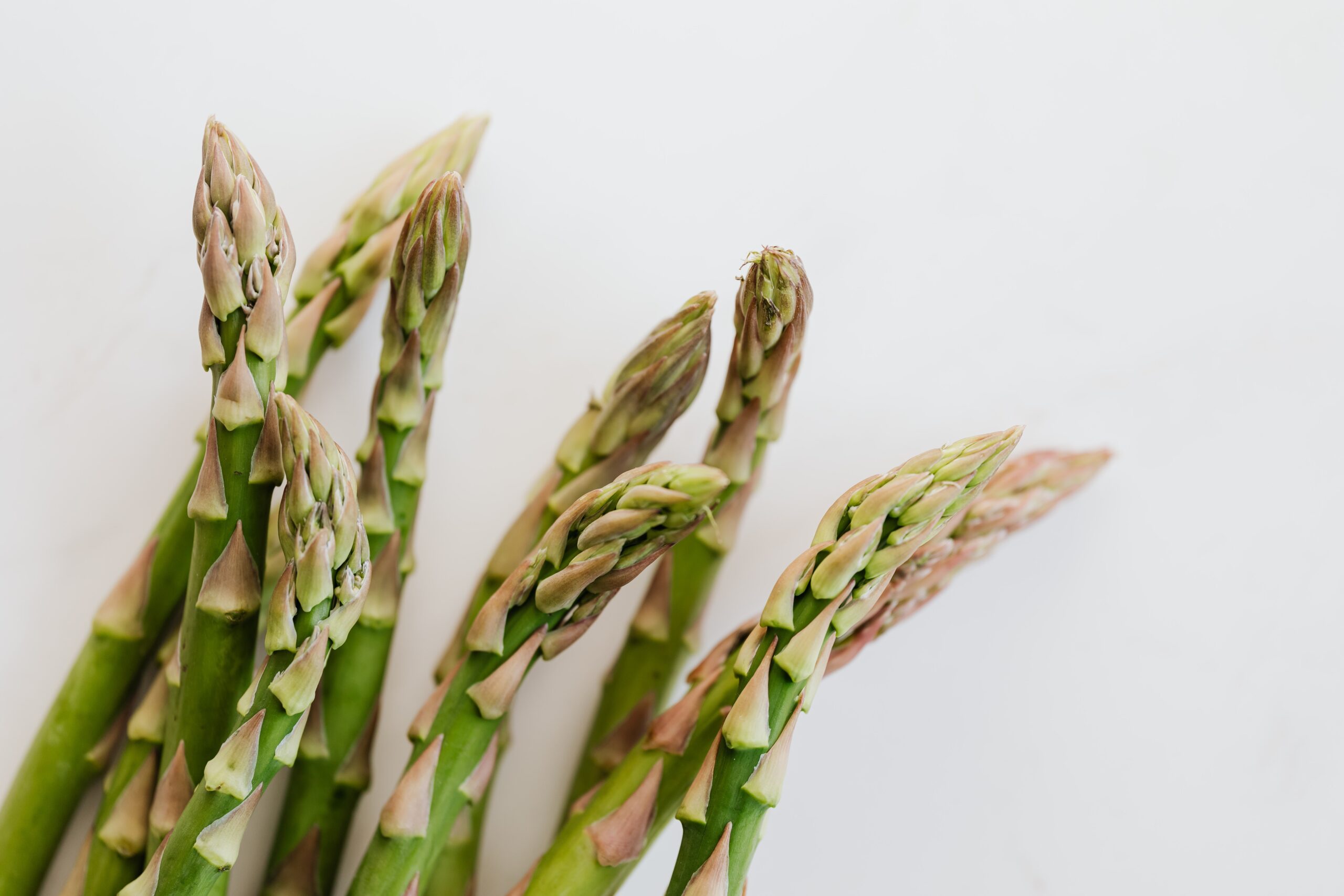Asparagus
Planting, maintenance and care, and harvesting are the stages of growing asparagus. Growing asparagus is simple, but this perennial vegetable, like other crops, has a set of needs for each stage. Failure to do so will reduce the production and quality of the crops, but growing asparagus should not be discouraged.

If you don’t have access to optimum growing circumstances and criteria, you can grow asparagus in a greenhouse. Because asparagus may take decades to grow, employing a greenhouse will ensure that you can meet your daily demands without fail. let’s discuss the stages of growing asparagus.
Stages of growing asparagus
There are three stages of growing asparagus. Unlike other crops, asparagus may be grown in only three stages. To begin, you must learn how to properly plant, nurture, and care for your plants, as well as harvest them. You should be able to start growing asparagus by the conclusion of this tutorial.
Planting
Among all the stages of growing asparagus, planting is the first stage. In the early spring, when the soil temperature is approximately 50°F, you may plant asparagus seeds or crowns. If you go with the crowns, you’re basically beginning with the root system of an asparagus plant that’s been growing for a year. This helps you avoid the time-consuming weeding that comes with asparagus seeds.
Is asparagus a difficult plant to grow?
Asparagus is easy to grow as long as the crowns or seeds are of good quality and meet the soil and temperature conditions. You may cultivate the plants yourself in a greenhouse to avoid weather and supply irregularities.
Choose a location that gets full light for planting both seeds and crows. For example, you may choose a bed in the greenhouse where you know you’ll get at least 8 hours of sunshine every day. The spears will grow thick and robust this way.
The soil, on the other hand, should be sandy and have a pH of 6.5 to 7.5. Although it’s best to plant asparagus on raised beds, growing it in pots is a viable choice if you’re short on cash. Keep in mind, however, that the containers must be large enough to avoid rot and congestion.
Seed Sowing
Asparagus seeds may be started inside and then moved outside for a week after they reach a height of 12 inches. It’s ideal to move the asparagus plants to a temporary garden bed after the final spring frost. In the autumn, the transplants will develop, and you may choose one of the high-yielding male plants to move into your permanent bed.
Asparagus crowns being planted
A trench of 18 inches wide and 8 inches deep is required for asparagus crowns. Allow 3 feet between these trenches, as well as a 2-inch dirt crest on each trench. This is where the crowns will be spaced 18 inches apart and their roots will be draped out.
How long does asparagus take to grow?
Growing asparagus will take three years. It’s tempting to start harvesting right away since spears may be found in the first two years. Asparagus, on the other hand, is one of those crops that takes a long time to establish.
During the first year, you may trim the dead foliage before side-dressing the crops with compost. The asparagus plants will be able to survive and produce copious harvests in the coming years as a result of this. Furthermore, waiting to pick asparagus can result in thicker roots that will serve you for many years.
Care and maintenance
The proliferation of weeds is a problem that may be expected while cultivating asparagus. The first two years are generally devoted to weed control until the plants have established themselves. Mulch compost around the plants from the start to minimize and smother weeds.
In terms of watering and feeding, asparagus plants need 2 inches of water in the first two years. You can easily handle this in the greenhouse with drip watering. In the spring and autumn, you may fertilize your plants using liquid fertilizer.
Is asparagus a multiplying plant?
While harvesting asparagus spears take three years, the plants proliferate swiftly. This is also why it is critical to measure the bed and containers before to planting. Unfortunately, asparagus plants are prone to overpopulation, which necessitates the cutting and relocation of certain plants.
For the first two years, you should also chop back the dead leaves 2 inches above the ground. Pests and illnesses will be easier to control if the old vegetation is removed. Asparagus should be pruned down in the autumn or until the foliage turns brown or yellow, according to experts.
Is asparagus a self-spreading plant?
When the asparagus plants have established themselves after two years, they will spread on their own. To prepare for filling in, it’s recommended to estimate that each plant will need 5 feet of space. Another way to improve asparagus plants for the following spear production is to let them fern until they die.
Harvesting
When asparagus is ready, how does it look?
When asparagus spears grow 8 to 10 inches tall, they are ready to pick. Younger spears, on the other hand, are more delicate, which is a typical choice in asparagus. A soil temperature of 50°F indicates that the spears are ready to be harvested.
For 6 to 8 weeks, cut the spears at ground level. However, keep an eye on the health of your crops and stop if necessary. It’s time to cease harvesting when the spears’ diameter is as little as a pencil.
You run the danger of having harsh asparagus if your harvest intervals are too long. At the same time, asparagus spears left in the ferns will attract bugs. Apply fertilizers and weed killers once you’ve finished harvesting.
Read About: How to save watermelon seeds
Is asparagus able to regenerate after being cut?
Because asparagus is a perennial plant, it regrows after being cut. The spears, on the other hand, will return each year, allowing asparagus production to last up to 30 years. As a result, you should leave 1 to 2 spears to restore the harvest for the next season.
Fertilize and mulch the bed now to prepare it for development in the spring. In the autumn, you may also mow away the dead ferns. Finally, avoid tilling the beds since this might harm the crowns. These are the stages of growing asparagus.
Conclusion
Asparagus is a crop that may be harvested for up to 30 years. Educating yourself about the phases of asparagus cultivation, from planting to maintenance and care to harvesting, will assure a long-term supply. However, you must recognize that producing asparagus plants requires patience and persistence.
Before beginning the harvest of asparagus spears, one must wait three years. As a result, it’s also critical to arrange the spacing and circumstances of the crops’ growing space. When growing asparagus in a greenhouse, you may control the spacing and circumstances. After reading this you are able to know the stages of growing asparagus.

[…] Stages of growing asparagus […]